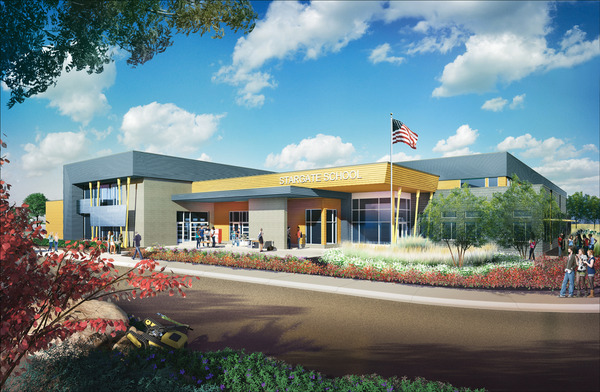The Local newsletter is your free, daily guide to life in Colorado. For locals, by locals.
Once upon a time, when it came to sending their kids to school parents had two choices: public or private. But in Colorado, a third option—charter schools—is becoming a top contender. From 2010 to 2014, charter school enrollment jumped by about 52 percent, bringing the total number of K–12 students in Colorado charter programs to more than 100,000. That’s more than Denver Public Schools’ entire enrollment. The curriculum at these tuition-free, state-funded programs is controlled by independent boards rather than districts, giving educators the flexibility to create diverse education models, such as college preparatory and STEM (science, technology, engineering, and mathematics) programs, and schools for pregnant and parenting teens. “Every child learns differently, and while the traditional public school may be a perfect fit for one child, another might learn better in a different environment,” says Stacy Rader, director of communications for the Colorado League of Charter Schools. “The driving force behind growth in the charter school marketplace is parents who want the ability to make a choice.” In the last five school years alone, 69 new Colorado charter schools have opened; 16 more are coming in the next year. We look at three with very different approaches to how Johnny learns his ABCs.
REACH
Fall 2015 | Parent-directed learning
Parents help define their kids’ classroom experiences at REACH (Reimagining Excellence for All in a Community with Heart) elementary school in Congress Park. The school still teaches standard core curriculum, such as language arts and math, but once those core skills have been satisfied, parents are allowed to direct their children’s educations. For example, one group of students might put on a play while another focuses on an engineering project. And come report card time, students receive individual learning plans that provide qualitative assessments of progress instead of letter grades.
Roots Elementary School
Fall 2016 | Bye-bye age-based classes
Roots is slated to open in Northeast Park Hill in 2016, but this year, kindergarten and first-grade classes will start in borrowed space at the Hope Center in the Clayton neighborhood. Instead of grouping students by age, Roots puts students in classrooms based on their education achievement levels and the ways they learn best. The new 40,000-square-foot school will have 18 classrooms positioned around a community learning space called the Grove, where K–5 students will combine technology (like iPads) with lessons in everything from math to reading and even entrepreneurship.
Stargate School
Fall 2016 | Teaching the gifted
Stargate isn’t just a new school building; it’s an entirely new campus. But not everyone gets in. Students must test into Stargate, which places gifted kids in classes based on the teaching methods that work most effectively for them. The 76-acre, $51 million Thornton school includes two academic buildings (one for K–5 and one for 6–12), an athletic field house, and spaces for students to engage in hands-on learning, such as building catapults when studying gravity. Once it’s open, Stargate will have the capacity to enroll 1,600 students, making it one of the largest charter schools in Colorado.









